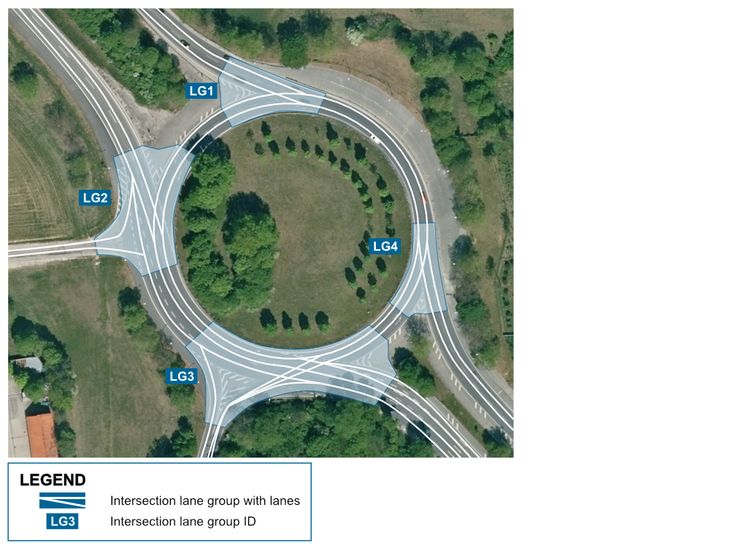Do you know which country is the undisputed world champion when it comes to roundabouts? It’s France! No country has more traffic circles and builds more roundabouts than “La Grande Nation”. The Étoile, famous for the Arc de Triomphe in its middle, if probably the world’s most famous roundabout. The boom began in the 1980s, when this traffic regulation strategy was imported from England. The numbers vary between 20,000 and 65,000 but counting roundabouts is not easy. The reason being that some of the roundabouts are hardly noticeable. In rural areas, a yellow circle painted in the middle of the intersection often must suffice. But there are also gigantic circles that are hardly perceived as such. For the NDS Association the primary focus is on the challenges of modeling roundabouts with multiple lanes to best support navigation guidance and automated driving use cases. NDS.Live offers support in this regard. It’s time to share a roundabout best practice.

When complex intersection scenarios, such as roundabouts, have multiple lanes, they often cross in parallel so that cross-traffic has to be expected in some areas. Large intersection lane groups are formed to encompass the complete area where lanes cross each other in such complex scenarios as a multi-lane roundabout.
The following figure shows a large and complex roundabout in Munich, Germany. Vehicles can enter and leave the roundabout on multiple parallel lanes. To enter the roundabout directly on an inner lane or leave the roundabout directly from the inner lanes, vehicles have to cross the outer lanes. To model the roundabout in NDS.Live, the following lanes and intersection lane groups are stored:

And it’s not just roundabouts where multiple lanes can cross each other. In the following example, the intersection lane groups are cut so that they include all the lanes that can cross each other as well as the gore areas that could be used by drivers, although legally not allowed. Intersection lane group 3 at the south end of the roundabout has several crossing lanes. In detail, the intersection lane group looks as follows:

Lane boundaries and boundary geometries are separately digitized and then referenced in the boundary sets of the lanes. For a better overview, the lane boundaries for the lanes from west to east and south to north are shown in separate figures. The logical boundaries for gore areas and the end of the road surface share their geometries with the corresponding marking boundaries.


Logical boundaries for gore areas and the end of the road surface share geometries with corresponding marking boundaries. Image source: NDS
This best practice shows one set of possible lane connections inside the intersection. Depending on the signage or country-specific driving rules, more connections could be available in reality, or some of the connections could be forbidden.
To implement lane groups according to this best practice, the following rules apply:
General remarks about the filling of the intersection lane group in this best practice:
A representation of selected lanes in the intersection lane group can be found in the NDS.Live Developer Portal.
Related Topics in Specification: https://developer.nds.live/schema/lane
Before we forget: Have you heard about the newest innovations at NDS.Live? In November there was the latest module update: Lane module can be used for routing (as an alternative to the road module). The October module update came with the introduction of terrain layers (Heightmap, BDAM), the introduction of speed profiles and SmartLayerTileService supporting direct layer access.
NDS Association wishes you happy holidays and many exciting development projects in 2023!
Back to news →